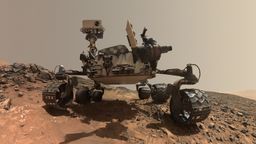The proximity of the Moon to Earth makes it an attractive target for missions to explore and exploit resources using the Thermal Mining technique.
In the search for resources to enable life beyond planet Earth, Water has always been at the center of everything and is positioned as the most precious asset and, above all, essential in this field of space exploration.
Faced with this more than clear and complex challenge, an idea has gained some prominence, even if it seems somewhat crazy: “Thermal Mining of ice on cold bodies of the solar system”, a revolutionary proposal conceived by George Sowers, an expert in space resources and professor of Mechanical Engineering at the Colorado School of Mines (CSM).
This concept aims harness the power of the Sun to obtain large amounts of water from celestial bodies. Focusing is simple but effective and is similar to using a magnifying glass to direct sunlight onto a specific point.
Imagine a block of ice in space. Being in a vacuum environment, the ice would sublime —it goes from a solid to a gaseous state— directly since there are no molecules in the vacuum to dissipate the heat. Here the key lies in directing sunlight on the ice area through a giant mirror. This would speed up the sublimation of the latter, generating vapor that can then be captured and condensed into liquid water.
A giant mirror, sunlight and a water collector to take it to the Moon
The basic architecture of the Thermal Mining system consists of 3 main components: a heliostat or large mirror to focus sunlight, a structure to trap sublimated water, and a cold transport system to capture water as it escapes from the surface.
Although the concept has potential for various celestial bodies, such as Mars, Ceres and asteroids, It is the Moon that is emerging as the most promising place for the extraction of water. The permanently shadowed regions of it are believed to harbor considerable amounts of water, making them an ideal location to begin off-Earth resource utilization.
In addition, the Moon presents unique advantages compared to other celestial bodies: its manageable gravity would allow the use of standard rovers to transport ice, and the absence of an atmosphere would facilitate the transfer of solar thermal energy.
Despite the great challenges that arise, there are already some eyes on this technique. It is estimated that the total cost of developing a lunar mining operation in the permanently shadowed regions would be about $800 million.
Although still in the planning phase, Thermal Mining promises a future in which humans can extract water and other resources from the Moon and other celestial bodies. With these innovations, space exploration could take a big step toward sustainability and self-sufficiency in space, paving the way for humans to visit other places in the universe.



